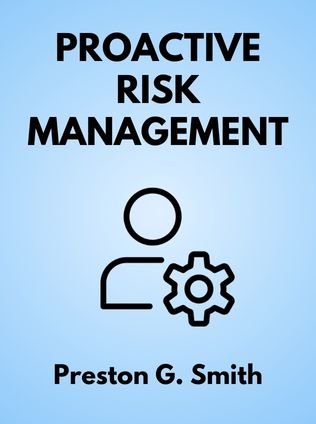
Proactive Risk Management
Controlling Uncertainty in Product Development
By Preston G. Smith,
Published 06/2002
About the Author
Preston G. Smith is the founder and principal of New Product Dynamics, a consultancy dedicated to improving product development processes. With over 18 years of experience, Smith has become a renowned expert in the field, helping numerous organizations streamline their development processes and manage risks effectively. His insights are grounded in practical experience and a deep understanding of the complexities involved in bringing new products to market.
Guy M. Merritt is currently the staff program manager at Tellabs in Ashburn, Virginia. Merritt played a crucial role in developing Tellabs' project risk management program, showcasing his expertise in managing project risks. His contributions to this book are informed by his extensive hands-on experience in the field, making the strategies and techniques presented both practical and actionable.
Main Idea
The central theme of "Proactive Risk Management: Controlling Uncertainty in Product Development" is to emphasize the importance of integrating risk management into the project management process. The authors argue that while most companies adopt some form of stage-gate product development, they often overlook effective risk management, leading to unexpected disruptions in schedule, cost, budget, or market acceptance. This book offers a five-step plan for managing project risks proactively, aiming to reduce surprises and enhance project outcomes by identifying and addressing risks early in the development process.
Table of Contents
- Introduction to Risk and Risk Management
- Understanding Risk Models
- Step 1: Identifying Risks and Impacts
- Step 2: Analyzing Risks
- Step 3: Prioritizing and Mapping Risks
- Step 4: Planning Resolution
- Step 5: Monitoring Project Risks
- Risk Management Toolkit
- Risk Management Approaches and Strategies
- Successful Implementation
Introduction to Risk and Risk Management
Risk in project management is often perceived negatively, associated with the possibility of loss or failure. However, Smith and Merritt redefine risk as surprises, which can be both positive and negative. They assert that managing risks proactively can significantly improve project outcomes. The goal of the book is to build a robust risk management methodology into an organization's project management practices.
"Risk management is the activity of identifying and controlling undesired project outcomes proactively." – Preston G. Smith and Guy M. Merritt
Risk is inherent in product innovation. Every decision made during a project involves some level of risk due to the uncertainty of information available at the time. Therefore, risk management should be as integral to project management as scheduling and budgeting.
Every Project Decision Involves Risk
In the fast-paced world of product development, time-to-market is crucial. However, the emphasis on speed often leads to overlooked risks, causing schedule delays and other issues. Smith and Merritt emphasize that uncertainty can be managed by understanding the probability of risk occurrences, their consequences, and the factors driving these risks.
Effective risk management involves clarifying the probability of risks, understanding the consequences of risk events, and determining the factors that influence the likelihood and impact of risks. While uncertainty can never be eliminated, it can be significantly reduced through proactive management.
What Is a Risk?
Risks always involve the potential for loss. If there is no possibility of loss, there is no risk to manage. Some risks may result in gains, but the focus is typically on avoiding negative outcomes. Understanding the time component of risks is also crucial. Eventually, a risk ceases to exist either because the loss has occurred, or the risk has been mitigated or resolved.
Companies often fail at risk management due to a lack of cross-functionality and proactiveness. Most development project risks fall outside of R&D, yet many companies mistakenly believe that all risks are concentrated within R&D. Effective risk management requires involvement from all functions within an organization.
Sign up for FREE and get access to 1,400+ books summaries.
You May Also Like
The Life-Changing Magic of Tidying Up
The Japanese Art of Decluttering and Organizing
By Marie KondoThe Lean Startup
How Today's Entrepreneurs Use Continuous Innovation to Create Radically Successful Businesses
By Eric RiesWho Moved My Cheese?
An Amazing Way to Deal with Change in Your Work and in Your Life
By Spencer Johnson, M.D.Make Your Bed
Little Things That Can Change Your Life...And Maybe the World
By William H. McRaven



















